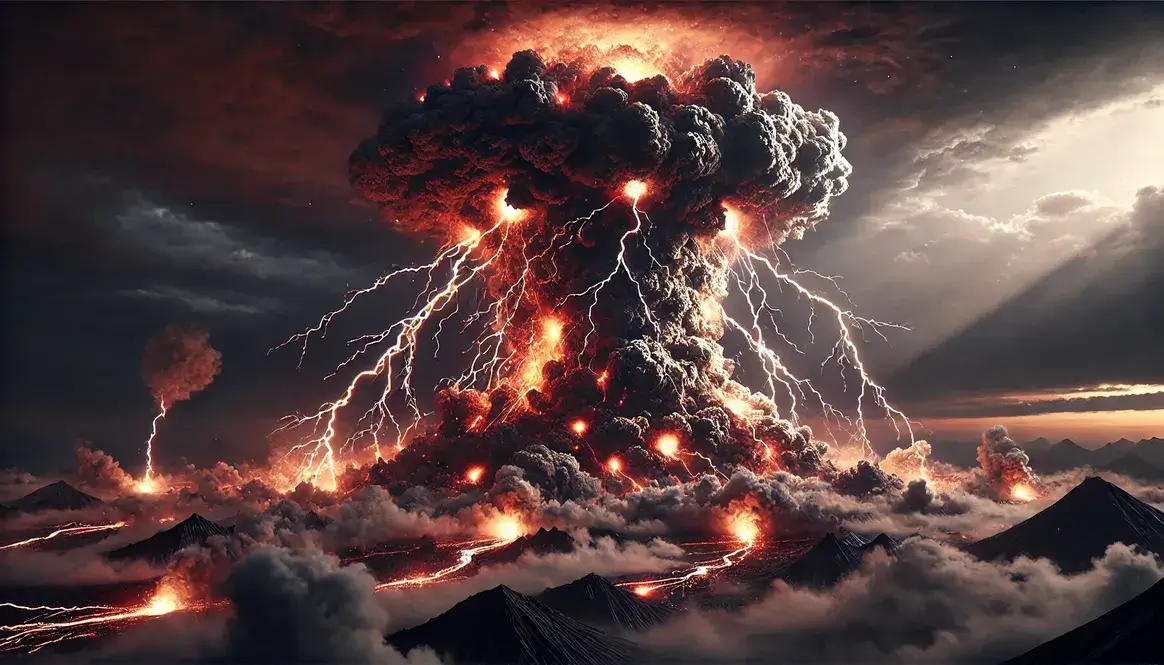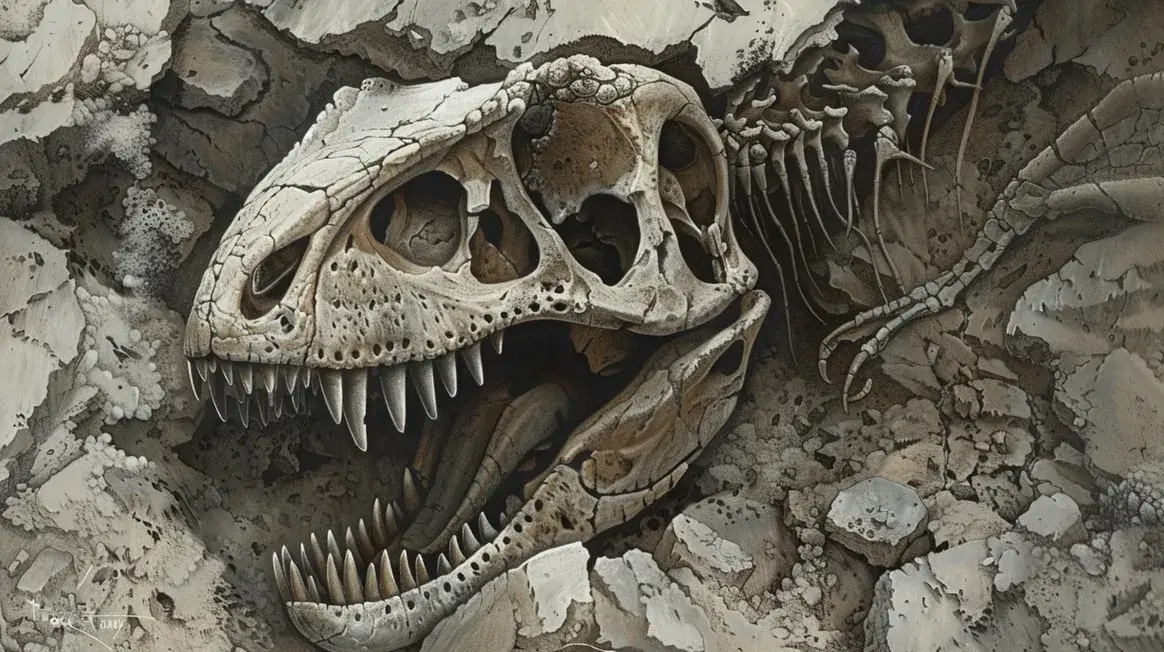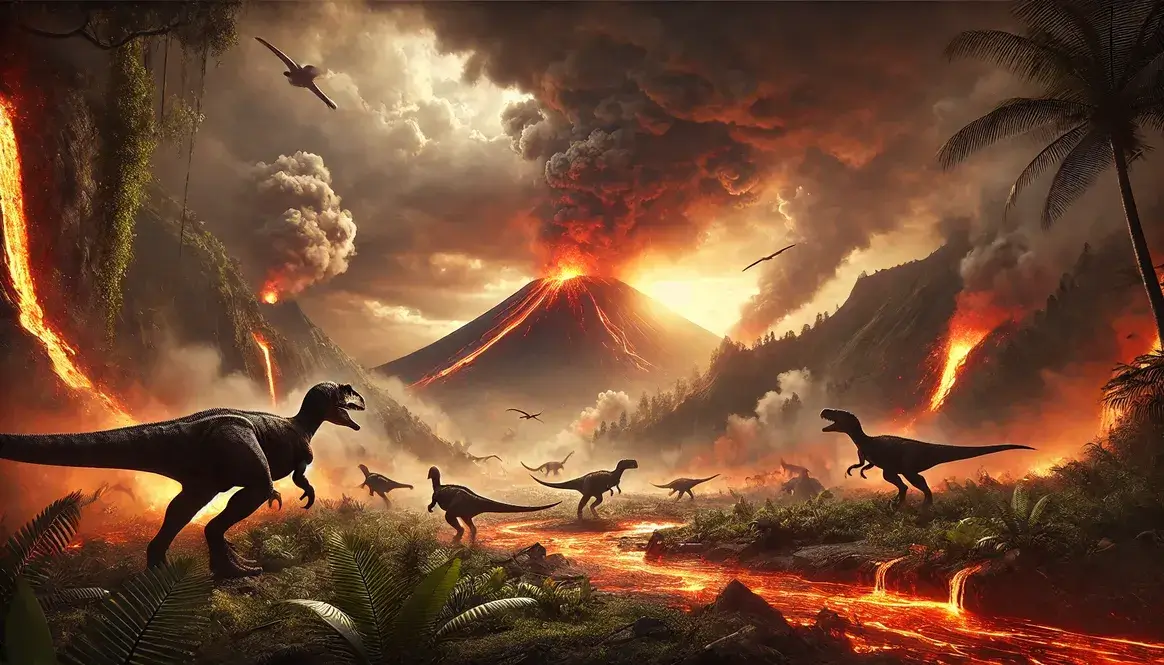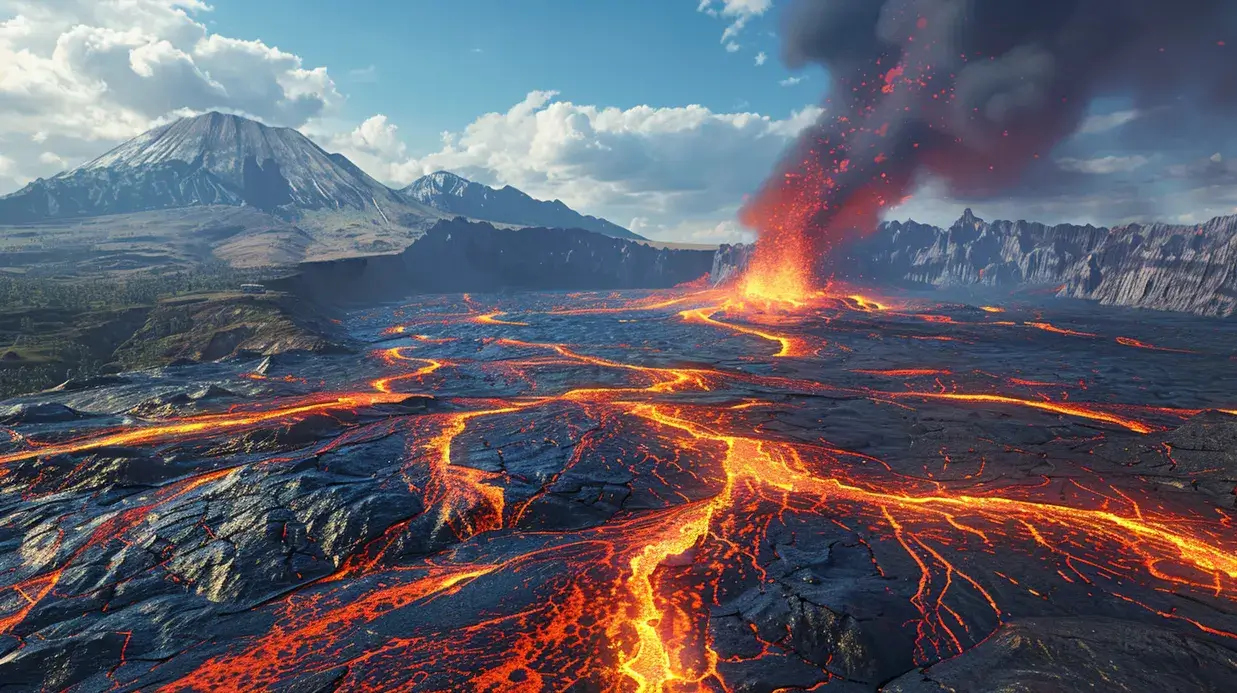Volcanoes are nature’s explosive architects, reshaping landscapes and influencing the world’s climate. These geological giants have the power to alter weather patterns across the globe, affecting temperatures, rainfall, and even the chemistry of our oceans.
When volcanoes erupt, they don’t just spew lava and rocks. They release a cocktail of gases and tiny particles into the atmosphere that can have far-reaching effects on our planet’s climate. From cooling the Earth in the short term to potentially warming it over longer periods, volcanoes play a significant role in the complex system that determines our weather and climate.
Imagine a single eruption changing summer into winter, causing crop failures, and altering the course of history. It’s not just a story – it’s something that has happened in the past and could happen again. Volcanoes are more than just mountains of fire; they’re nature’s weather engineers, capable of dramatically changing our climate in ways both big and small.
| Key Takeaways: How Volcanoes Change Climate |
|---|
| 1. Volcanoes release gases and particles that affect global temperature |
| 2. Short-term effects include cooling due to ash blocking sunlight |
| 3. Long-term effects involve greenhouse gases warming the planet |
| 4. Historical eruptions have caused significant climate disruptions |
| 5. Volcanic activity played a role in the extinction of dinosaurs |
How Volcanoes Change Climate: A Powerful Process
Volcanoes are nature’s climate manipulators, wielding their power through a complex interplay of gases and particles. These geological marvels have the ability to alter our planet’s temperature, rainfall patterns, and even the chemistry of our atmosphere and oceans.
The main mechanisms by which volcanoes affect climate involve two key players: volcanic gases and particulate matter. These elements work together to create both short-term and long-term effects on our planet’s weather systems.
Volcanic Gases: The Invisible Climate Changers
When volcanoes erupt, they release a variety of gases into the atmosphere. The three most significant gases for climate change are:
- Carbon dioxide (CO2)
- Sulfur dioxide (SO2)
- Water vapor
Each of these gases interacts with the atmosphere in unique ways:
- Carbon dioxide: This greenhouse gas traps heat in the atmosphere, potentially leading to long-term warming effects. However, volcanic CO2 emissions are typically much smaller than human-caused emissions.
- Sulfur dioxide: When SO2 reaches the upper atmosphere, it combines with water to form sulfuric acid aerosols. These aerosols reflect sunlight back into space, causing a cooling effect that can last for months or even years.
- Water vapor: While water vapor is a potent greenhouse gas, its effects from volcanic eruptions are usually short-lived due to the water cycle.
The volcanic activity at end of Cretaceous released massive amounts of these gases, potentially contributing to significant climate changes during that period.
Ash and Aerosols: Tiny Particles, Big Impact
Volcanic eruptions also eject solid particles into the atmosphere, ranging from fine ash to larger rock fragments. These particulates, along with aerosols formed from gases, can have substantial effects on climate:
| Particle Type | Size | Climate Impact |
|---|---|---|
| Ash | 2 mm – 0.063 mm | Short-term cooling, affects local weather |
| Fine Ash | < 0.063 mm | Can spread globally, reflects sunlight |
| Aerosols | < 0.002 mm | Long-lasting cooling effect, alters atmospheric chemistry |
Ash and aerosols affect the climate by:
- Reflecting sunlight: Particles in the atmosphere reflect some of the sun’s energy back into space, leading to cooling at the Earth’s surface.
- Altering cloud formation: Volcanic particles can serve as nuclei for cloud droplets, potentially changing rainfall patterns.
- Absorbing radiation: Some particles can absorb heat, warming the layer of the atmosphere where they reside.
The impact of these particles can be dramatic. For instance, the Deccan Traps eruptions released vast amounts of ash and aerosols, potentially contributing to the environmental stress that led to the extinction of the dinosaurs.
Understanding how volcanoes change climate through these processes is crucial for predicting and preparing for future volcanic impacts on our weather systems.
Immediate Effects: When Volcanoes Roar
When a volcano erupts, its effects on climate can be swift and dramatic. The immediate aftermath of an eruption can lead to significant short-term changes in weather patterns, both locally and globally.
Cooling the Planet: The Volcanic Veil
One of the most notable short-term effects of volcanic eruptions is global cooling. This phenomenon occurs due to the vast amounts of ash and aerosols ejected into the atmosphere, creating what scientists call a “volcanic veil.”
Here’s how this cooling process works:
- Aerosol formation: Sulfur dioxide from the eruption combines with water vapor in the atmosphere to form tiny sulfuric acid droplets.
- Light reflection: These aerosols, along with ash particles, reflect sunlight back into space.
- Temperature drop: With less sunlight reaching the Earth’s surface, temperatures begin to fall.
The duration of these cooling effects can vary depending on the size and intensity of the eruption. Typically, the cooling period lasts from a few months to several years. In extreme cases, such as the volcanic winter phenomenon, the effects can be more severe and long-lasting.
| Eruption Size | Typical Cooling Duration |
|---|---|
| Small | A few months |
| Moderate | 1-2 years |
| Large | 2-5 years |
| Massive | 5-10 years or more |
Local Climate Chaos
While global cooling is a significant effect, volcanic eruptions can also cause localized weather disruptions that are often more intense and unpredictable.
Regional weather changes may include:
- Increased rainfall: Ash particles in the atmosphere can serve as nuclei for raindrops, potentially leading to increased precipitation in areas near the volcano.
- Altered wind patterns: The heat and gases released by an eruption can create their own wind systems, disrupting local atmospheric circulation.
- Temperature fluctuations: Areas close to the eruption may experience extreme temperature swings due to the interplay of ash, gases, and altered sunlight.
One fascinating example of unusual weather patterns post-eruption occurred after the 1883 eruption of Krakatoa in Indonesia. This event led to vibrant, colorful sunsets around the world due to the scattering of light by volcanic particles in the atmosphere. It also caused a global temperature drop of about 1.2°C (2.2°F) in the year following the eruption.
Understanding these immediate effects is crucial for predicting and preparing for the impacts of future volcanic eruptions on our climate system.
Long-Term Consequences: Volcanic Legacy
While the immediate effects of volcanic eruptions can be dramatic, their long-term consequences on climate can be equally significant. Volcanoes leave a lasting legacy on our planet’s climate system, influencing temperature trends and altering the very chemistry of our oceans.
Greenhouse Gas Contributions
Volcanoes are natural sources of carbon dioxide (CO2), a potent greenhouse gas. Although their contributions are often overshadowed by human activities in the modern era, volcanic CO2 emissions have played a crucial role in shaping Earth’s climate throughout geological history.
Here’s how volcanic CO2 affects long-term climate trends:
- Atmospheric accumulation: Unlike sulfur aerosols that fall out of the atmosphere relatively quickly, CO2 can remain in the atmosphere for hundreds to thousands of years.
- Gradual warming: Over time, this accumulated CO2 contributes to the greenhouse effect, trapping heat and potentially leading to long-term warming trends.
- Feedback loops: Warming can lead to the release of more greenhouse gases from other sources (like melting permafrost), amplifying the initial warming effect.
However, it’s important to put volcanic CO2 emissions into perspective. Let’s compare volcanic and human-caused greenhouse gas emissions:
| Source | Annual CO2 Emissions (million metric tons) |
|---|---|
| Volcanoes (average) | 200-300 |
| Human Activities (2019) | 43,100 |
As we can see, human activities currently emit over 100 times more CO2 than volcanoes on an annual basis. However, massive volcanic events in Earth’s past, such as the Deccan Traps eruptions, likely had much more significant impacts on global climate.
Altering Ocean Chemistry
Volcanic activity doesn’t just affect the atmosphere; it also has long-lasting impacts on our oceans. The gases released during eruptions can significantly alter ocean chemistry, with far-reaching consequences for marine life and global climate.
The process of ocean acidification due to volcanic activity works as follows:
- Volcanic gases, particularly CO2, dissolve in seawater.
- This dissolved CO2 reacts with water to form carbonic acid.
- Carbonic acid then breaks down, releasing hydrogen ions and lowering the ocean’s pH.
The effects of this increased acidity can be profound:
- Shell formation: Many marine organisms, like corals and mollusks, struggle to form their calcium carbonate shells in more acidic conditions.
- Food chain disruption: As smaller organisms are affected, the impact ripples up the food chain.
- Carbon cycle alteration: Changes in marine ecosystems can affect the ocean’s ability to absorb and store carbon.
These changes in ocean chemistry can persist for long periods, potentially influencing global climate patterns. For instance, ocean acidification can reduce the ocean’s capacity to absorb CO2 from the atmosphere, potentially accelerating atmospheric warming.
Understanding these long-term consequences is crucial for interpreting past climate changes and predicting future trends. The volcanic legacy in our climate system serves as a reminder of the complex interplay between Earth’s geological processes and its atmosphere and oceans.
Volcanic Climate Change in Action: Historical Examples
Throughout history, powerful volcanic eruptions have left their mark on global climate, sometimes with far-reaching consequences for human societies. Let’s explore two significant examples that demonstrate the profound impact volcanoes can have on our planet’s weather patterns.
The Year Without a Summer: 1816
In April 1815, Mount Tambora in Indonesia erupted with devastating force. Little did the world know that this event would lead to one of the most unusual climate disruptions in recent history.
The aftermath of the Tambora eruption:
- Global cooling: Vast amounts of volcanic ash and sulfur dioxide were ejected into the atmosphere, creating a haze that blocked sunlight.
- Temperature drop: Average global temperatures fell by 0.4-0.7°C (0.7-1.3°F).
- Weather chaos: The Northern Hemisphere experienced severe weather anomalies throughout 1816.
The year 1816 became known as the “Year Without a Summer” due to its bizarre and often devastating weather patterns:
- Frost in summer: Parts of New England and Europe experienced frost and snowfall in June and July.
- Crop failures: The cold temperatures led to widespread crop failures and food shortages.
- Societal impacts: The unusual weather sparked migration, economic hardship, and even inspired literary works like Mary Shelley’s “Frankenstein.”
This event serves as a stark reminder of how volcanic eruptions can trigger global temperature drops, affecting human societies across vast distances.
The Laki Eruption of 1783
While not as well-known as Tambora, the Laki eruption in Iceland had significant impacts on climate, particularly in Europe.
Eruption details:
- Duration: 8 months (June 1783 to February 1784)
- Lava flow: Covered an area of 565 square kilometers
- Gas emissions: Released an estimated 120 million tons of sulfur dioxide
The effects of the Laki eruption were felt far beyond Iceland’s shores:
| Region | Climate Effects |
|---|---|
| Iceland | Crop failures, livestock deaths |
| Europe | Sulfurous fog, extreme temperatures |
| North America | Severe winter, Mississippi River freezing |
The eruption’s impact on European weather was particularly notable:
- A persistent haze known as the “Laki haze” covered much of Europe for months.
- Summer temperatures in Europe were up to 3.3°C (6°F) below average.
- The following winter was one of the most severe on record in Europe and North America.
The Laki eruption demonstrates how even a relatively localized volcanic event can have widespread climate effects. The volcanic gases released during this eruption not only affected weather patterns but also had significant impacts on human health and agriculture across Europe.
These historical examples highlight the complex ways in which volcanoes can influence global climate, sometimes with dramatic and long-lasting consequences for human societies. Understanding these past events helps us better prepare for potential future volcanic climate disruptions.
Volcanoes and the K-Pg Extinction: A Prehistoric Climate Catastrophe
The end of the Cretaceous period, about 66 million years ago, marked one of the most dramatic extinctions in Earth’s history. While the asteroid impact is often cited as the primary cause of the dinosaurs’ demise, volcanic activity played a significant role in shaping the climate catastrophe that led to this mass extinction event.
The Deccan Traps: A Volcanic Giant
The Deccan Traps in India represent one of the largest volcanic events in Earth’s history. This wasn’t a single eruption, but a series of massive lava flows that occurred over hundreds of thousands of years.
Key facts about the Deccan Traps:
- Area covered: Approximately 500,000 square kilometers (193,000 square miles)
- Volume of lava: Estimated at 1,000,000 cubic kilometers (240,000 cubic miles)
- Duration: Main eruptive phase lasted about 800,000 years
The sheer scale of the Deccan Traps eruptions is difficult to comprehend. Imagine a sea of lava covering an area twice the size of Texas, erupting intermittently for hundreds of thousands of years. For a more detailed exploration of this incredible geological feature, you can read about what the Deccan Traps are in our dedicated article.
Climate Chaos at the End of the Cretaceous
The Deccan Traps eruptions likely had a profound impact on the late Cretaceous climate, contributing to the conditions that led to the extinction of the dinosaurs.
How Deccan Traps volcanism affected the climate:
- Greenhouse gas emissions: The eruptions released massive amounts of CO2, potentially causing long-term global warming.
- Sulfur aerosols: Sulfur dioxide from the eruptions formed aerosols in the atmosphere, leading to periods of global cooling.
- Acid rain: The combination of volcanic gases with water vapor created acid rain, affecting terrestrial and marine ecosystems.
- Ocean acidification: Increased CO2 levels led to more acidic oceans, harming marine life.
The interaction between these volcanic effects and the asteroid impact created a “perfect storm” for global extinction. Here’s a simplified timeline of events:
| Time | Event |
|---|---|
| ~66.25 million years ago | Deccan Traps eruptions intensify |
| ~66 million years ago | Asteroid impacts Earth |
| Immediately after impact | Severe short-term cooling |
| Following years/decades | Prolonged global warming |
The Deccan Traps’ effect on ancient life was likely significant even before the asteroid impact. The long-term volcanic activity stressed ecosystems worldwide, making them more vulnerable to rapid change.
When the asteroid struck, it delivered the final blow to an already struggling biosphere. The impact’s immediate effects (like global wildfires and a severe impact winter) were compounded by the ongoing volcanic climate changes, creating conditions that few species could survive.
This combination of volcanic and impact-related climate change reshaped life on Earth, paving the way for the rise of mammals and eventually, humans. The K-Pg extinction event serves as a stark reminder of how large-scale volcanic activity can interact with other factors to dramatically alter our planet’s climate and ecosystems.
Understanding Volcanic Climate Change: A Key to Earth’s Past and Future
Volcanoes are powerful forces that have shaped our planet’s climate throughout history. From short-term cooling effects to long-term warming trends, volcanic eruptions have left their mark on Earth’s weather patterns and ecosystems. By studying these effects, we gain valuable insights into past climate changes and potential future scenarios.
The interplay between volcanic activity and climate is complex, involving atmospheric changes, ocean chemistry alterations, and interactions with other geological events. This knowledge not only helps us understand dramatic events like the K-Pg extinction but also informs our approach to current climate challenges.
As we continue to study how volcanoes change climate, we better prepare ourselves for future volcanic events and gain crucial insights into the delicate balance of our planet’s climate system.









